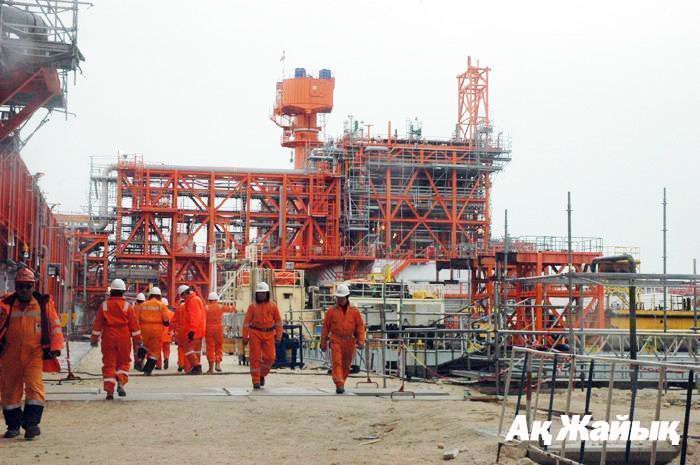By Saule Tasboulatova
 Both oil and gas lines at Kashagan require full replacement. This was officially reported today by NCOC press service.
Both oil and gas lines at Kashagan require full replacement. This was officially reported today by NCOC press service.
“According to current assessment based on examination results, both oil and gas pipelines require full replacement. This will be confirmed after completion of pipeline examination. Currently the Operator is developing a plan for full replacement of pipeline. According to the plan defected pipes will be fully replaced by the mid of 2014.
The plan envisages tendering process for selection of suppliers and contractors, as well as determining of materials specifications and the use of available capital equipment. The target is to develop an optimum plan for pipelines’ replacement so that production could be renewed as soon as possible. As a precautionary measure, to avoid losing time, the Consortium has initiated the tender process for the potential purchase of pipeline joints."
It is noted in the press release that production re-start will depend on results of investigation that are expected to be available by the end of the 2nd quarter, however production renewal in 2014 is not expected.
Press release reads that damaged pipelines are intended for transportation of oil and gas from the artificial island (“D Island”) to Bolashak oil and gas processing complex.
The following details have been specified: “Each pipeline, approx. 90 km long and 28 inches in diameter, is designed to resist H2S content of 15% that is present in Kashagan crude. Pipe sections were delivered by two Japanese companies, Sumitomo and JFE, and Italian Saipem was engaged in pipeline construction”.
Currently, three specialized independent laboratories: TWI (UK), CSM (Italy) and Institut Français de la Corrosion (France) are examining the damaged pipe samples and working on establishment of main reasons of pipe failure, reads press release.
GOOD PIPES OR BAD PIPES?
NCOC informed the following about the results of pipeline investigation: “Experts have established that leaks were the result of sulfide stress cracking caused by high hardness of metal at various sports. Based on the results of laboratory analyses carried out on pipe fragments in real production environment simulated conditions, the experts concluded that technical specifications of pipes were designed for Kashagan field conditions. Technical parameters fully meet the requirements of NACE standards (National Association of Corrosion Engineers), as well as the best world practices of oil and gas fields’ operations”.
Although, the Inspection Statement made by the Ecology Department of Atyrau Oblast pays attention to the following: “According to the conclusion of the state ecological expertise under the RoK Ministry of Environmental Protection dated 22 June 2005… the specified pipeline was designed for transportation of dehydrated gas with high content of sulfur and carbon dioxide not exceeding 12.9%. However, the actual critical content of sulfur and carbon dioxide in the associated gas is over 16% that may lead to formation of micro cracks in the metal”.
Unfortunately, NCOC press release doesn’t specify the material that future pipes will be made of.
However, Erbolat Dossayev, Kazakhstan’s minister for economy and budget planning, in his interview to Financial Times said that he expected production to start at the end of next year at the earliest or it could be delayed until 2016 until nearly 200km of pipelines is replaced. Mr Dossayev said that the delay represented a loss of 0.5 percentage points of GDP this year.
 В Атырау -6
В Атырау -6